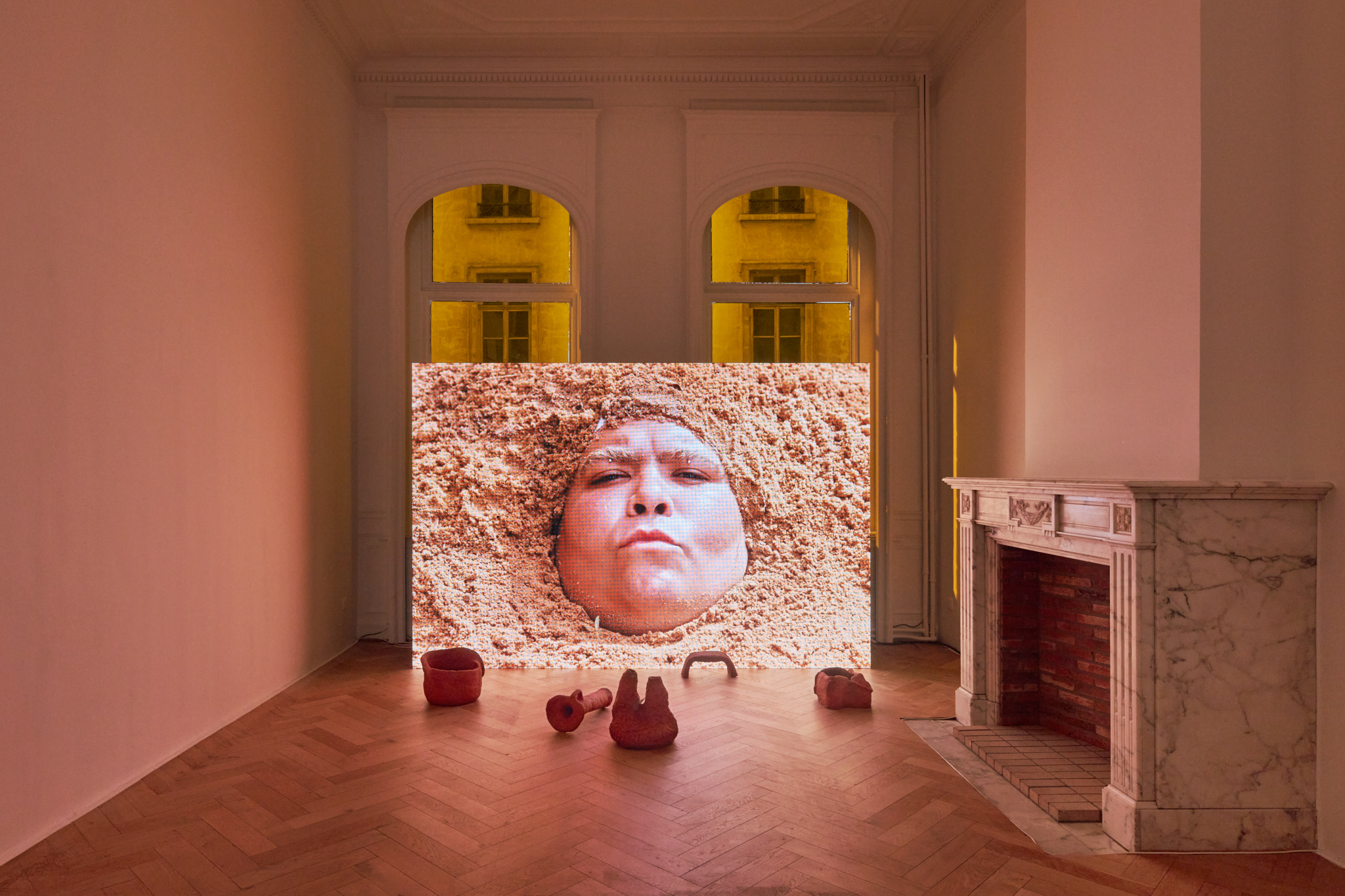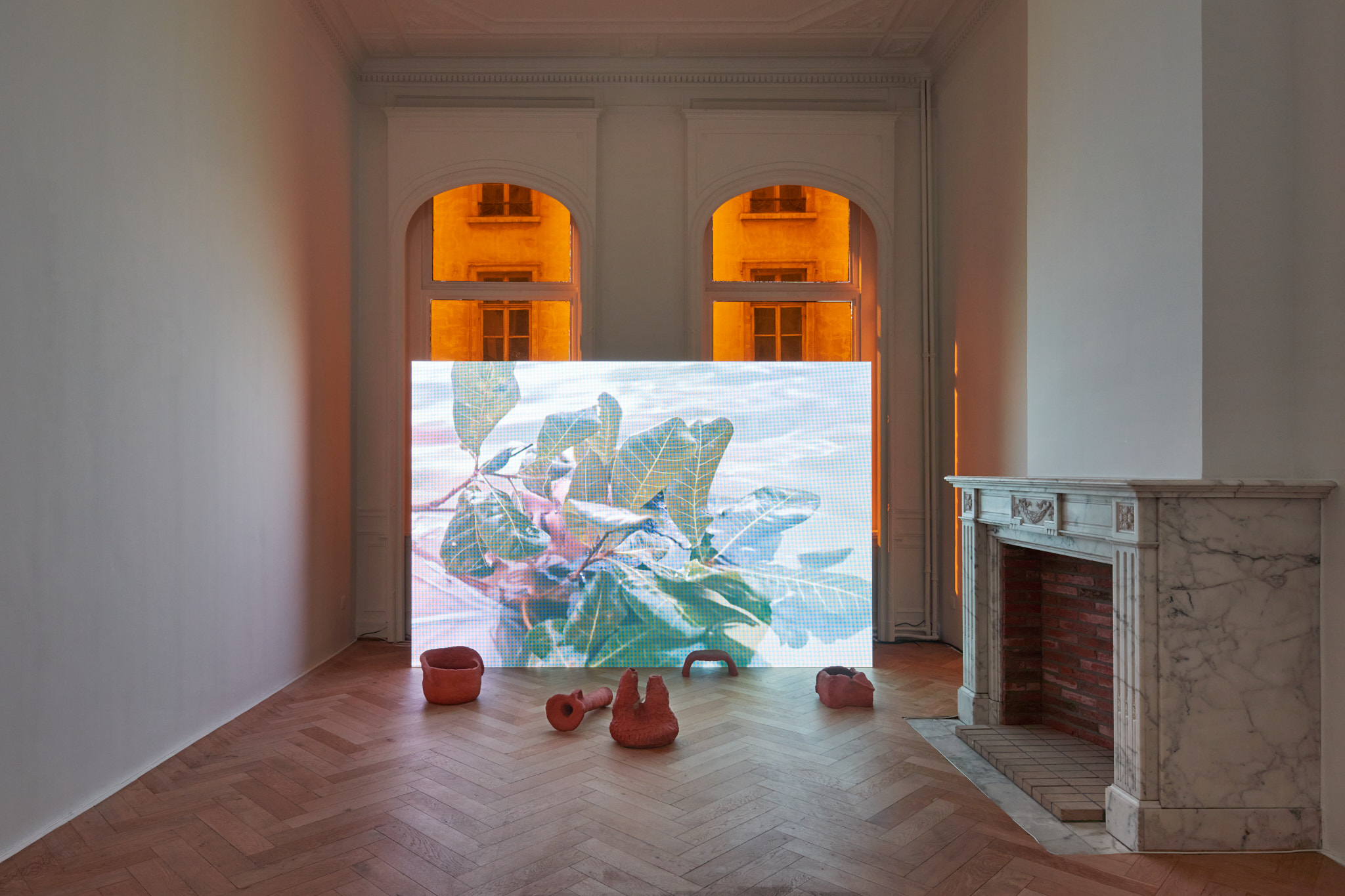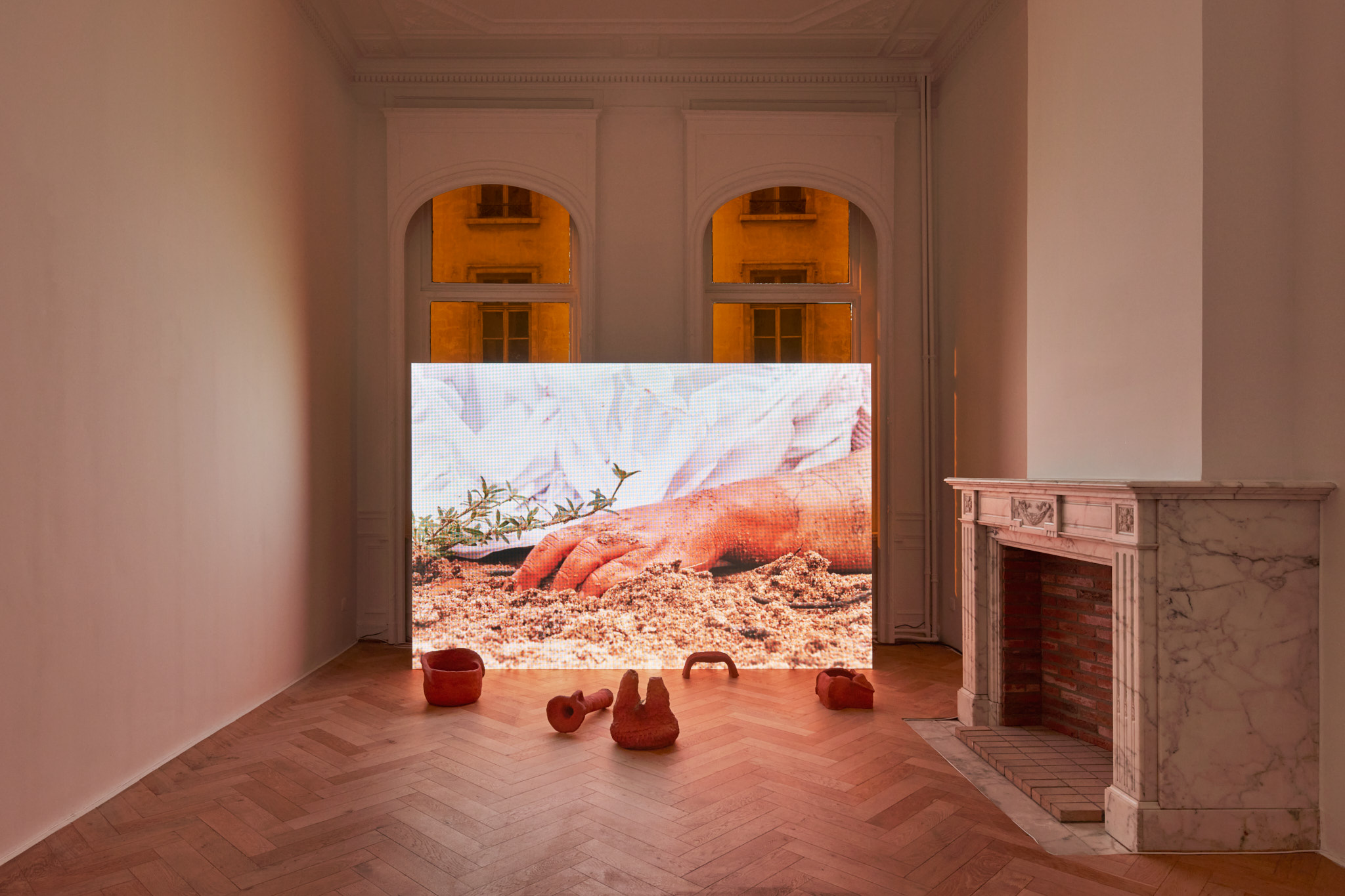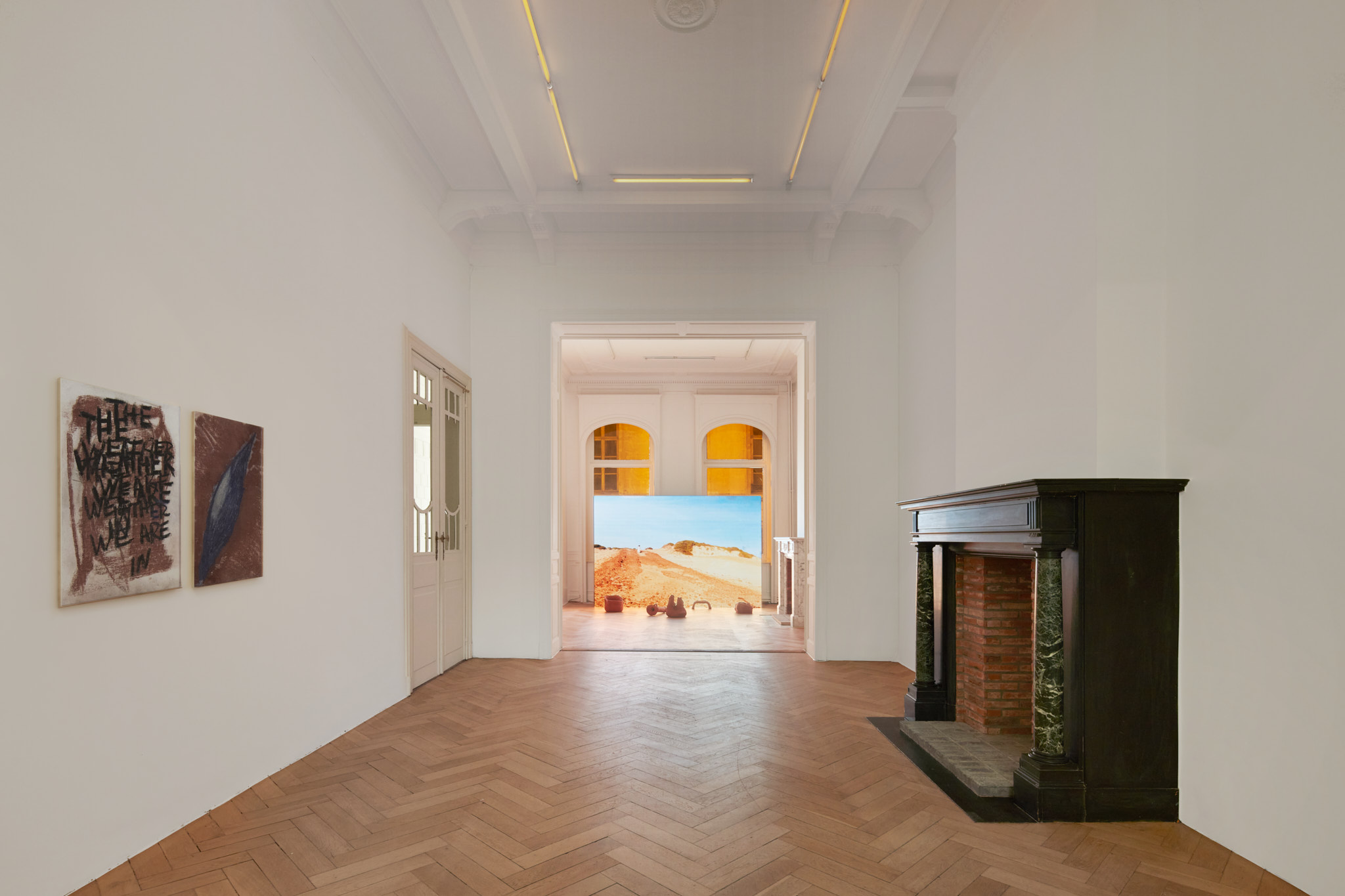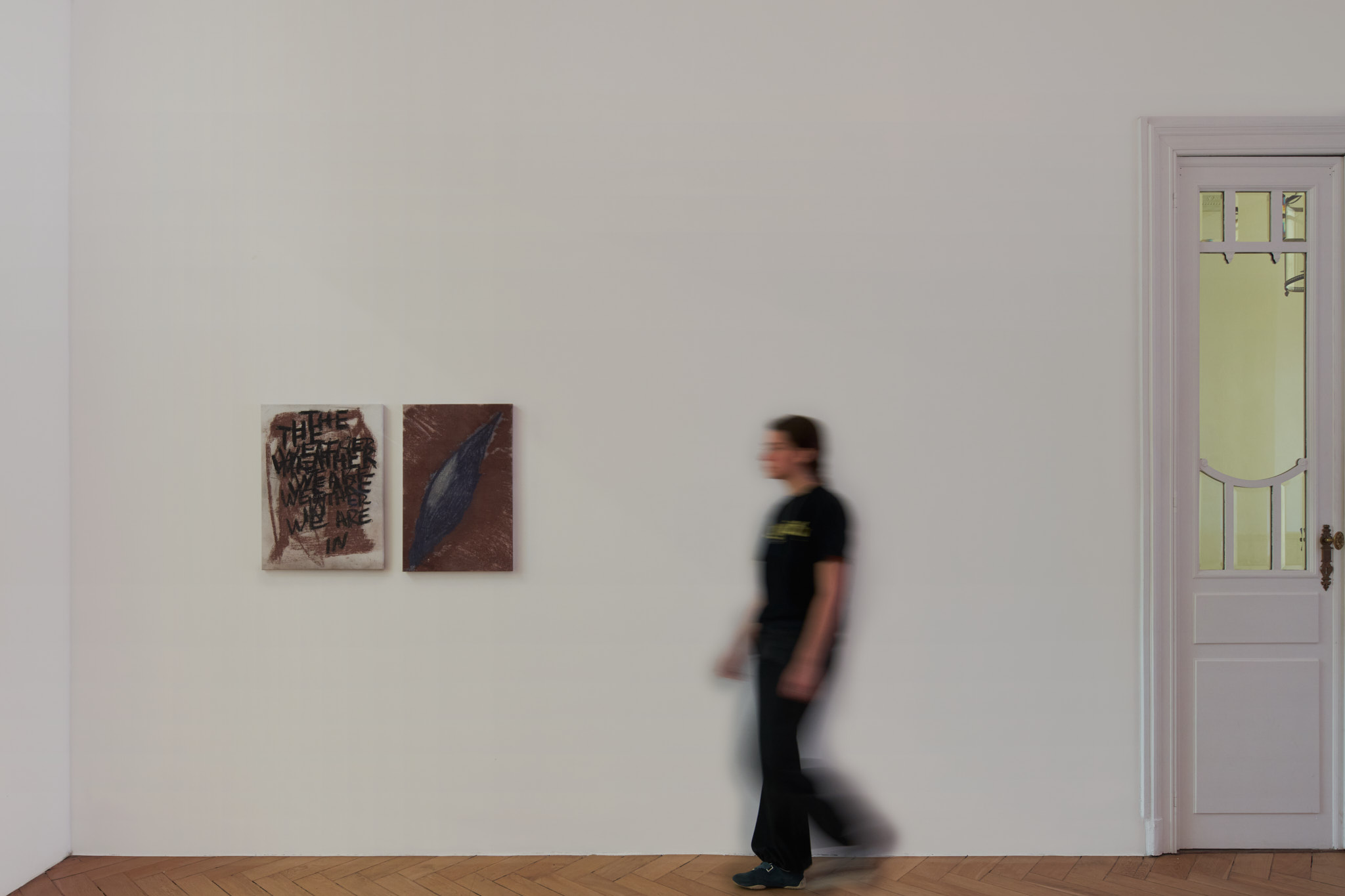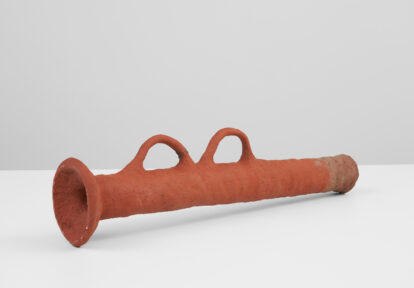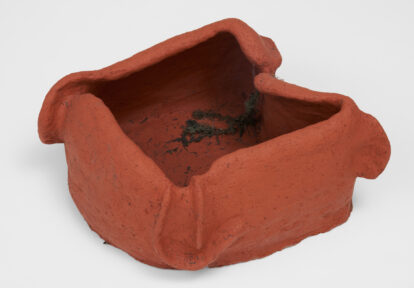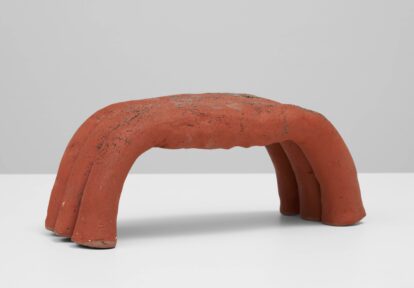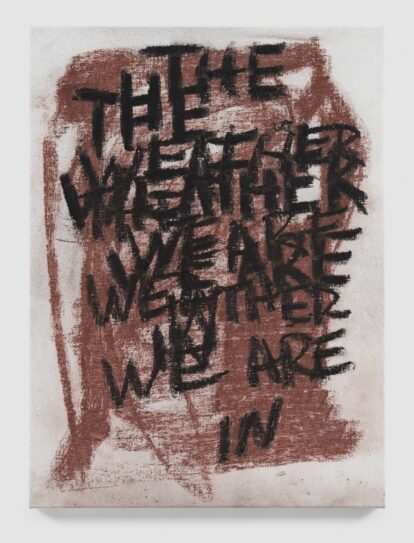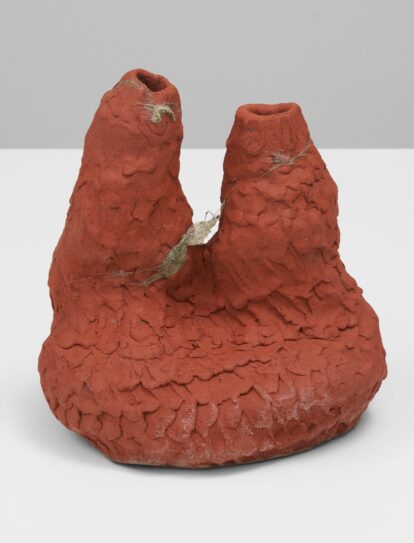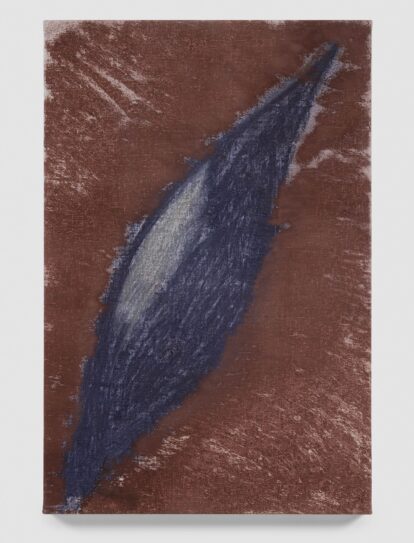Jota Mombaça: Traces of a poetics of grounding
Leda Martins
YOU WILL KNOW / THE DAUGHTERS OF THE DRIEST RAIN presents us with several constitutive principles or driving forces that connect Jota Mombaça’s thought process and artistic trajectory with her personal movements and deterritorializations, among them: the kinesis of transitions of various orders, the addresses, climates and atmospheres, temporalities, groundings or burials, and excavating actions. Here, works traverse and reinaugurate Jota’s presence in Brazil after intervals—sometimes long, sometimes short—in which she lived and moved around the world, becoming a celebrated international referent.
These premises and assertions are vital, as they make up the gnosis of a rich and dynamic mentality based on various materials, devices, and supports upon which Jota’s art is projected: the creations with clay, the canvases, the sounds, the video, the performance. In everything, the body—which is also moving—is established as a vehicle and environment for the foundation of fables and aesthetic inscriptions, creating a perceptual and sensitive dramaturgy with a powerful imagery effect, kinetic par excellence.
Here, this multifaceted artist uses traffic as a continuous motto of displacement, which is, itself, an index of transposition, passages, crossings, resilience, disassembly, and ethical commitments; these, in turn, impart her powerful and strong aesthetic language. What is exposed is enunciated through the entwinements that, in the relational composition, complement, supply, and nourish each other, providing nuances of meaning and resignifications. By dislocating territories, ways of doing things, and acts of remaking, restoring, and rebuilding, she establishes often unexpected links between beings and things.
Like time, Jota, with each stroke, reinaugurates herself, spirals, re- elaborating and unfolding the poetics of burial that she has been developing since 2014. In the creative formulations of this poetics—cleaved by displacements, transits, retreats, gaps, deficiencies, and resilience— the allusions to the planet’s uncertainties and upheavals in its pulses of climate instability evoke their own trajectories of identity construction and turn their subjectivations into becomings, metamorphoses, insistently translated into the acts of digging, excavating, burying, and unearthing.
Jota inscribes an inevitable and desired return to the gaps and protrusions of the earth in the contiguous gestures of excavating and filling, establishing an intimate relationship with the clay, the ground, the raw material for the nurturance of and search for belonging. Excavating and filling leads us to opening ourselves up to the desired junction and to the bonds the body makes with the elements and substances that inhabit the earth, its skin and abysses. But it is also a simultaneous movement upwards, that which projects itself to the exterior of being, an excavation upwards, as revealed in “The Birth of Urana.”
On the canvas, the concentric and eccentric circles manifest the idea of a restless and accelerated revolving of water-mud, representing climatic chaos, drawn like skeletons of houses swallowed by convulsions and whirlpools, sucked towards a devouring, dark depth. They are like the scenes and sighs of a rebellious planet in a state of agony. Strong lines in cloudy tones curve and twist. But this same movement of destruction and suction seems to maintain, albeit tenuously, a pulse of vitality, a breath of hope, since the lines that cross the eddies shoot outwards beyond the edges, as if they wanted to break the state of destruction and dystrophy in search of succor to come, a restoration to happen, in search of the desired, nurturing breath.
As for the ceramics, their format alludes to ceremonial objects, and their designs subtly evoke facial expressions, eyes, organs perhaps, figures, which also project upwards as if exhaling their contents. As ritual beings, they seem to be there not to contain or guard something, but as gaps that exhale what is contained in frequencies of vibrations, offering themselves as passages of breath, aromas, and perspiration of the elements that form and whisper in them. Offerings. These are inscriptions that engrave the surfaces as signs and evocations of a timeless belonging, which reconnects humans to their entire surroundings, to their nature, continually sought after, excavated, updating the ancestral memory of a congenital relationship. Memories of a being, which is a planet-dwelling, residences, home.
What residences are these?
They are the earth-ground, the earth-mud, which, in turn, are transmuted into the body-earth; the body-mud of the screen; the body-breathing, inhaling and exhaling, perspiring corrupted airs; the water-body, which is also the thirst-body, the disturbed, dry body that is at the same time too watery; a loud body-image. All of this forming, building a porous body-screen, composed of multiple settlements and substances that are nutritious or toxic. The palette of brown and dark colors, which, in its tones and hues, creates a matte, opaque luminosity—whether in the paintings or the ceramics—and reinforces the material and symbolic presence of clay, a material of creation in a malleable state, always being remade and offering itself to continuous, liquid, and fluid recreation.
In the video, the image of the burial sculpts a powerful self-portrait in which the face retracts from its frontal position in relation to the viewer and seems to project itself upwards, as if it wanted to move the camera’s gaze that captures and contemplates it. The grounded face, as a spatial image, redraws the skin of the planet, its surfaces and enigmas, placed so that it can be seen from above, from distances that expand its infinite horizons. The face thus appears to be a body composed of all the earth elements that form it. An invitation to an expanded rotation of the gaze, which activates and recomposes our cosmic and planetary belonging to the same extent that it triggers our responsibilities. And that requires the dislocation of the gaze, because it appears as something to be observed, thought about, and treated as an integral part of the cosmos, in the translational movement of planet Earth, its residence.
This principle of mutation, this driving agency, is one of the aspects of Jota’s poetics that, in this work, is reaffirmed and embodied. The dynamic kinesis that cadences circulation and confluences; the processes that connect the works, some in relation to others; the spatialities that weave them; the fabulation of movement within the pieces; their internal choreography, all produce a constant effect of locomotion, mutability, and transience. And it is in this fluency that Jota excellently performs the discontinuous temporalities of her wanderings, her subjectivations, grounded and exiled, which, simultaneously and synchronically, exercise various directions and meanings—inside and outside, inwards and outwards, downwards and upwards and to the sides—drawing non-concentric spirals, always in the process of remaking and weaving. And that simulate a time that is also always re-inaugural, and which is remade in the curves of aesthetic experiences and subjective lives, translated in the power of their artistic languages, and of a fine and sophisticated cosmic perception, crossed by complex affections and postulations, creative and creating.
In the synapses of movement, as action and line, the song “Djaniras”— composed by Israel Semente and Shanghai and performed by Cátia de França on the 1979 album Vinte Palavras Girando ao Redor do Sol (Twenty Words Circling Around the Sun)—introduces the pulses of a fast cadence, of an intoxicating rhythm, which, through contrast, extension, and timbral and melodic gradations, interacts with the cold colors predominant in the pieces, combining them with a warm and vibrant voice. The song, more than naming the exhibition, thus becomes a referent and a sound gradient, a pulsating vocality that invades the silences and releases itself into the air as if speaking about the objects on display.
You will know, then, that, like the daughters of the slightest drizzle, Jota returns. In what she accomplishes, she manifests a recurring desire not to settle; to rise up against the paralyzing repetitions of sameness; to influence the structures that promote violence and personal and social violations, as well as in relation to the planet; to expose the tremors and upset their codes, ruining their destructive logic; to transform her thinking into insurgent, powerful, instigating, kinetic, and uncomfortable creative actions.
An Angolan proverb states that the one “who goes and comes back is not the one who goes, but the one who comes back.” In her desire to make herself earth, to become ground, to also reconnect with what we call Brazil, Jota Mombaça transposes us from the torpor of comfortable waiting and from the always postponed desire for the impossible, and rushes and prepares us to meet a realization that happens in the now, an intense and radiant intervention in the present, which, like clay in its unfinished and incomplete state, is there to be transfigured.

